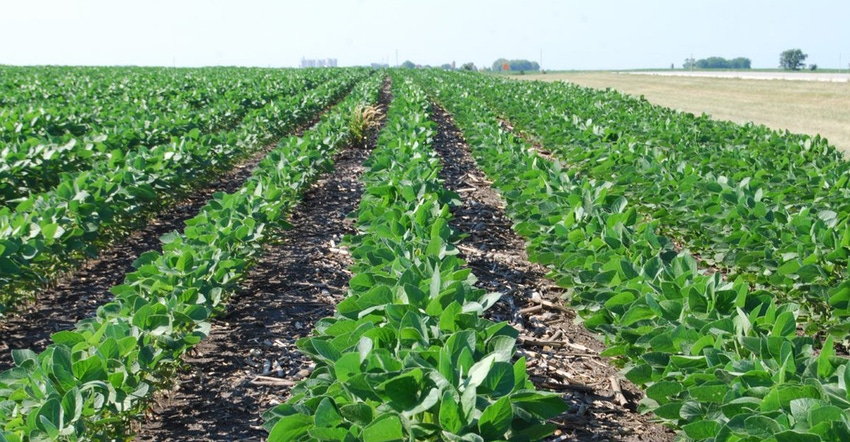July 22, 2019

With the extremely wet spring and delayed planting this year, a significant percentage of Iowa’s soybean crop was planted in June. According to USDA’s weekly survey, 70% of Iowa’s 2019 soybean crop was in the ground as of June 9, leaving 30% to be planted later. The survey for the week ending June 16 showed 11% of the expected bean acreage yet to be planted.
Looking at their fields this summer, many farmers are wondering: Will my late-planted beans reach maturity before the first killing frost hits this fall?
Compared to corn, that’s a harder question to answer. Soybean development is driven by photoperiod or day length. Corn is more affected by temperature or growing degree day (GDD) accumulation during the growing season. However, for both crops — soybeans as well as corn — weather plays a huge role in development and final yield.
What research shows
Mark Licht, Iowa State University Extension cropping systems agronomist, wrote an article earlier this spring about soybean planting date and decisions on when to switch to an earlier-maturing variety. Basically, he advised against switching to an earlier-maturing variety when planting in June in Iowa.
Anecdotally, what we’ve seen in research is that a 60-day delay in planting only equates to a 10- to 14-day delay in soybean maturity.
ISU research shows the highest yield potential for soybeans in Iowa is achieved with April to mid-May planting dates. Bean yields will begin to decline after May 20, with larger declines the later they are planted. Soybean variety maturity selection is often discussed as a way of achieving higher yields; however, in late planting situations, soybean grain yield isn’t significantly influenced by maturity selection.
Weather makes a difference
The risk of soybeans getting hit by a killing frost before reaching maturity in the fall isn’t as high as for corn. But yields for both crops are highly dependent on timely rain in July and August. The late-planted crops don’t have a root system as deeply developed, to reach the needed subsoil moisture supply if it turns hot and dry.
Wet conditions this spring also made weed control a challenge. Late-planted beans, especially those in 30-inch rows, aren’t likely to form a canopy as quickly to crowd out weeds. Many fields are showing weed escapes.
The challenge with later-planted soybeans is getting more vegetative growth before they enter the reproductive stage. You want as many nodes per plant as possible.
Soybeans with a normal planting date usually begin flowering around June 20, the summer solstice. Once flowering begins, it can continue for six to eight weeks. Before flowering, temperature drives vegetative growth. The warmer the summer, the faster the plants develop. Although photoperiod is a big driver of maturity, planting date and accumulation of growing degree days also play a role.
Later planting, fewer nodes
On average, a three-week delay in planting may result in a one-week delay in maturity. Summer weather patterns can push that one way or the other.
Later-planted beans may have fewer nodes per plant because they put more distance between nodes while playing catch-up on vegetative growth. Once flowering becomes heavy, plants slow their vegetative growth and put more energy into creating pods. Earlier-maturing soybeans will slow node production quicker than later-maturity beans.
Doing whatever you can to keep plants healthy and green longer will be key to higher-yielding, late-planted beans. If anything, scouting is more important this year. The maturity may be shifted back a week, but you’re looking for the same pests and diseases.
McGrath is the research and Extension coordinator for the Iowa Soybean Research Center at Iowa State University. Email him at [email protected].
About the Author(s)
You May Also Like






